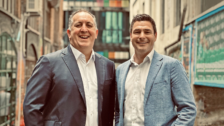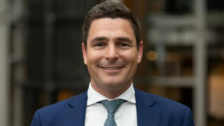Impact investment in demand, but short supply
By now, people know what impact investing is and according to RIAA, impact assets under management in Australia have grown to about $19B at the start of 2020; up 250% in the past 24 months.
Those are decent numbers, but there’s every indication we’ve barely scratched the surface of impact investing’s potential. The growth is powered by tremendous demand from across Australian society. Research shows the vast majority of Australians want their capital invested in line with their values. You may have noticed that super funds are responding; they’re telling the stories of how their investment decisions protect the environment and support communities, alongside delivering financial wellbeing. Check out the messaging and reporting from HESTA, Aware Super, Future Super, Australian Ethical and Christian Super, just to name a few. This is a substantial effort. Member expectations and funds’ reporting obligations should continue to influence super funds’ investment committees, so we expect this trend to accelerate as investment decision makers better align investments with members’ preferences.
“I know we need to start moving investments to impact, but where should I start?”
Our first suggestion is of what not to do. Don’t think of impact investments as an asset class of their own.
Impact is a lens that can be applied across any asset class, rather than being an asset class in itself. While some investors set aside a part of their portfolio for impact investing, we believe a better strategy is to look for impact investment opportunities within each main asset class in an investment portfolio. To begin, an adviser or investor could select impact investments to replace their traditional investments when the portfolio needs to be rebalanced anyway or when taking profits across each asset class.
It can be done! There are more and more impact options for wholesale investors. Here are some approaches to impact within each main asset class.
- The Equities Allocation:
There are three main impact strategies for stocks, and some fringe ones. Some impact investors or impact funds buy shares in companies that have net positive environmental and social impacts. The direct impact attributable to a modest individual shareholding is probably quite low, but when done by larger numbers of investors or together as investors in a fund, companies will start paying attention.
Some impact equities fund managers buy into a portfolio of companies that have the growth and income characteristics they’re looking for, then use their holdings as a platform to advocate with company management and boards to improve the company’s social and environmental performance. Call that engagement.
The other strategy is more hard-nosed impact activism. These investors, in order to drive change, target companies with environmental or social problems. In this model the impact manager buys shares, and co-operates with other shareholders so they can get shareholder resolutions on the agenda. This has been very impactful recently.
- The Bonds Allocation:
Green bonds and social bonds provide capital for companies, government and corporates to implement green and social initiatives. Indeed the vast majority of Australian impact FUM as counted by the Responsible Investment Association Australasia (RIAA) sits in this asset class, and this month Lendlease issued another $500m in green bonds. In Australia, investing in a dedicated portfolio of green bonds is really only available for wholesale investors, but the market is also signalling interest in options for retail investors. You can also expect that within an Australian ethically screened bond fund, there would be a portion of green bond or social bond holdings. Globally, there are ETFs purely of climate bonds and yearly issuance is above USD $250b. So it’s a big and growing market, albeit skewed international.
- The Property Allocation:
At IIG we have seen that property can be an exceptional opportunity to deliver environmental and social benefits alongside financial returns: Improving the environmental performance of buildings, financing excellent environmental standards through construction, or supporting socially-focused organisations to build or acquire property.
The financial case is that green buildings are more efficient and cheaper to run, they’re more attractive to tenants and their workforces, more resilient to weather extremes, and are well-positioned for potential policy changes aimed at addressing climate change. Although taking this approach was once considered unnecessary, it’s now just smart investing. So we’ve seen increasing “green” ambition and results sector-wide.
- The Alternatives Allocation:
Many investors and advisers who encounter impact investing for the first time categorise all impact investments as alternatives. As the paragraphs above show, that’s not necessarily the case. However, there are quite a few impact strategies that fit into the alternatives allocation of a mainstream portfolio, which many advisers recommend sizing up to 20% of a total portfolio. When compared to the other main asset classes, there are very different fundamental drivers of performance for investments like clean energy infrastructure, social impact bonds, impact private debt, regenerative agriculture, or the truly innovative startups and growth companies that are addressing environmental and social opportunities. The performance of these types of assets have lower correlation to traditional asset classes, so they provide real diversification benefits and a more absolute return strategy. If investors are looking to reduce exposure to market volatility, alternative assets in general and impact investments in particular are a great option.
So, the point we wanted to make today is this: Although impact investing isn’t an asset class itself, impact investments may help build out the ‘alternatives’ allocation within a mainstream asset allocation model.
Amanda Goodman is the Head of Capital Raising & Investor Relations for Impact Investment Group. The company is one of the most established impact investment fund managers in Australia, and has recently launched the Impact Alternatives Fund, a diversified portfolio of environmental and social impact investments targeting low correlation and attractive returns. Expected initial investments include social impact bonds, a bridge loan to fund the development of a large scale solar farm in SA, and regenerative farming.










